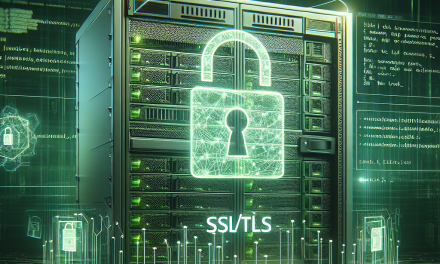In today’s digital landscape, the importance of security and data integrity cannot be overstated, especially for Linux server administrators. With Linux being a popular choice for server solutions, keeping your environment safe from malware is paramount. ClamAV (Clam AntiVirus) is a leading open-source antivirus engine designed for detecting malicious software on Linux systems. In this guide, we will walk you through the comprehensive steps needed to set up ClamAV on your Linux server, ensuring a reliable defense against malware threats.
What is ClamAV?
ClamAV is an open-source antivirus toolkit that is widely used on Unix-based systems. Originally developed for Unix, it has been ported to several platforms, including Windows and macOS. ClamAV is primarily known for its ability to detect various types of malware, including viruses, trojans, and other malicious software. Its capabilities include on-demand scanning, real-time scanning, and the ability to be integrated with mail servers to scan for incoming and outgoing emails.
Prerequisites
Before you start the installation of ClamAV, ensure that you have:
- A Linux server (Debian, Ubuntu, CentOS, or other distributions).
- Root or sudo access to install software and modify system settings.
- An up-to-date package manager (APT for Debian-based systems, YUM/DNF for RHEL-based systems).
Installation Steps
1. Updating Your System
Begin by updating your package manager to ensure your system is up-to-date.
For Debian/Ubuntu:
sudo apt update && sudo apt upgrade -yFor CentOS/RHEL:
sudo yum update2. Installing ClamAV
Now, install ClamAV using your package manager.
For Debian/Ubuntu:
sudo apt install clamav clamav-daemon -yFor CentOS/RHEL:
sudo yum install epel-release
sudo yum install clamav clamav-update -y3. Updating ClamAV Database
ClamAV uses an up-to-date database to identify threats. After installation, the next step is to update this database:
sudo freshclamThis command will download the latest virus definitions from the ClamAV servers. Make sure your server has an active internet connection to perform this task.
4. Configuring ClamAV
4.1. Configure the ClamAV Daemon (clamd)
The ClamAV daemon allows for real-time scanning. You must configure the daemon before starting it.
Edit the configuration file:
sudo nano /etc/clamav/clamd.confMake necessary changes such as defining the local socket, updating the configuration to your needs, or changing scanning options.
To enable the ClamAV daemon, ensure the following line is uncommented:
#LocalSocket /var/run/clamav/clamd.sockOnce you’ve made the necessary changes, save and exit.
4.2. Configure ClamAV for Scheduled Scans
To set up scheduled scans, you can create a cron job that will execute the ClamAV scanner at specific intervals.
Open the crontab:
sudo crontab -eAdd the following line to schedule a daily scan at midnight:
0 0 * * * /usr/bin/clamscan -r /home >> /var/log/clamav/scan.logThis command will perform a recursive scan of the /home directory every day at midnight and log the output to scan.log.
5. Starting ClamAV Services
After configuration, it’s time to start the ClamAV services:
sudo systemctl start clamav-daemon
sudo systemctl enable clamav-daemonTo check the status of ClamAV:
sudo systemctl status clamav-daemon6. Manually Scanning for Malware
To manually scan a particular directory or file, use the following command:
clamscan /path/to/scanFor example, to scan the /var/www/html directory, use:
clamscan -r /var/www/html7. Reviewing Scan Reports
To review your scan results, check the log files created during the scheduled scans or simply observe the output provided by the manual scan.
Logs can be found in the scan.log file specified in the cron job. To view log contents:
less /var/log/clamav/scan.log8. Keeping ClamAV Updated
To ensure that your server remains secure, periodically update ClamAV. You should set up a cron job for freshclam so that it automatically fetches the latest virus definitions.
Add the following line to your crontab for automatic updates, running every six hours:
0 */6 * * * /usr/bin/freshclam9. Additional Security Practices
While ClamAV is a powerful tool in preventing malware, it is always a good practice to integrate it into a broader security strategy. Here are some recommended practices:
- Regularly audit your system for vulnerabilities.
- Utilize a firewall to block unwanted traffic.
- Keep software and services up-to-date to minimize the potential attack vectors.
- Implement SSH security best practices.
Conclusion
ClamAV offers robust protection against malware for Linux servers. By following the steps outlined in this guide, you can set up ClamAV effectively and maintain your server’s integrity and security. Regular updates and scans will help you in identifying potential threats and keeping your data safe from malware attacks.
For more information and resources on cybersecurity strategies and tools, stay tuned to the WafaTech Blog!





